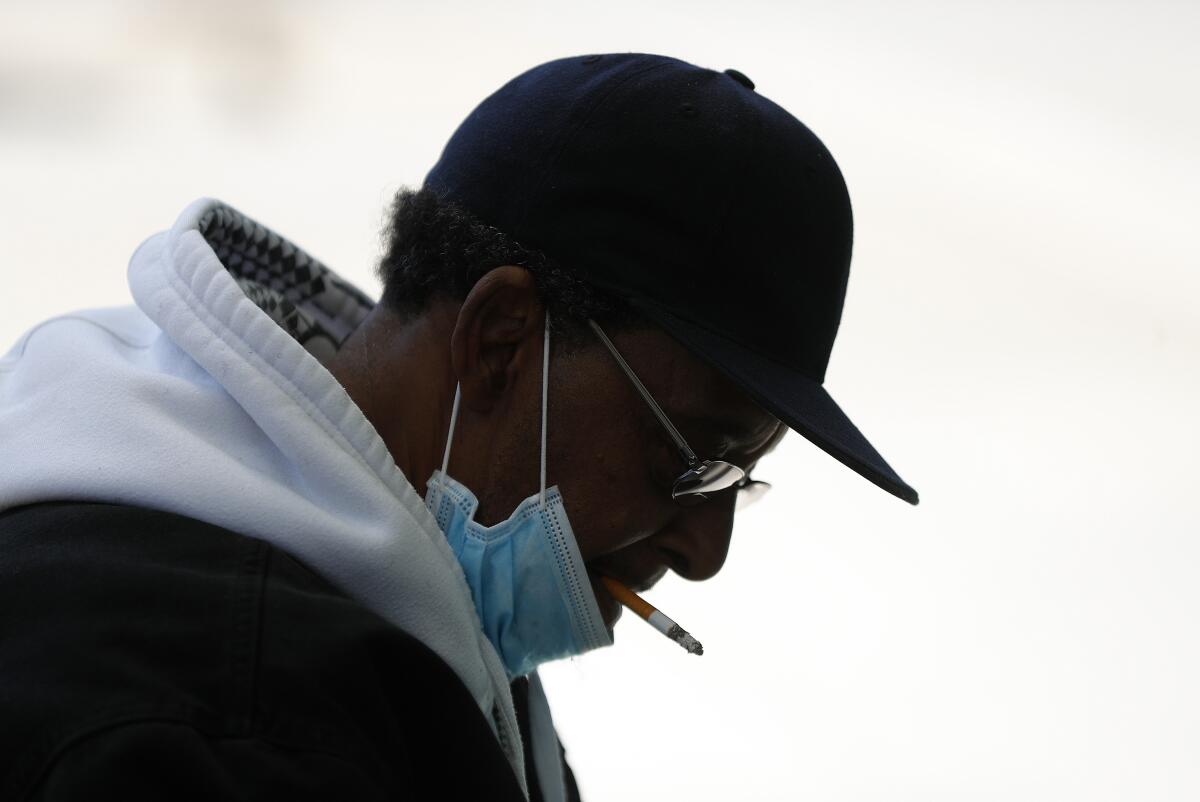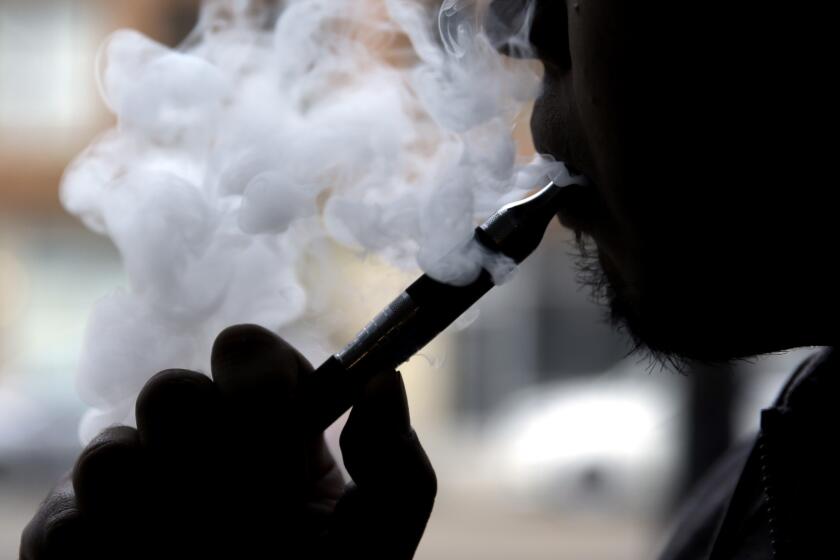U.S. adult smoking rate fell during first year of pandemic

- Share via
NEW YORK — The first year of the COVID-19 pandemic may have seen more Americans drinking heavily or using illicit drugs — but apparently, not smoking.
U.S. cigarette smoking dropped to an all-time low in 2020, with 1 in 8 adults saying they were smokers, according to survey data released Thursday by the Centers for Disease Control and Prevention. Adult e-cigarette use also dropped, the agency reported.
CDC officials credited public health campaigns and policies for the decline. Outside experts said tobacco company price hikes and pandemic lifestyle changes probably played roles.
“People who were mainly social smokers just didn’t have that going on any more,” said Megan Roberts, an Ohio State University researcher focused on tobacco product use among young adults and adolescents.
What’s more, parents who suddenly were home with their kids full time may have cut back. And some people may have quit following reports that smokers were more likely to develop severe illness after a coronavirus infection, Roberts added.
The CDC report, based on a survey of more than 31,000 U.S. adults, found that 19% of Americans used at least one tobacco product in 2020, down from about 21% in 2019.
Use of cigars, smokeless tobacco and pipes was flat. Current use of electronic cigarettes dropped to 3.7%, down from 4.5% the year before.
Cigarettes were the most commonly used tobacco product, with 12.5% of adults using them, down from 14%.
Studies are finding that cigarette smokers are more likely to have severe cases of COVID-19, the disease caused by coronavirus. Many lung doctors say that doesn’t surprise them much.
Health officials have long considered cigarette smoking — a risk factor for lung cancer, heart disease and stroke — to be the leading cause of preventable death in the United States.
In 1965, 42% of U.S. adults were smokers. The rate has been gradually dropping for decades for a number of reasons, including taxes and smoking bans in workplaces and restaurants.
A big part of the recent decline has to be price hikes, some experts said.
For example, British American Tobacco — the company that makes brands including Camel, Lucky Strike and Newport — increased prices four times in 2020, by a total of about 50 cents a pack.
The number of cigarettes sold in the U.S. actually went up in 2020, the first such increase in two decades, the Federal Trade Commission reported last year.
It’s possible that fewer people smoked, but those who did were consuming more cigarettes.
The tobacco industry sees the sales potential in the pandemic, offers up freebie protective gear, doorstep deliveries, festive discounts.
“That’s a viable hypothesis — that you had people with more smoking opportunities because they weren’t going to work,” said David Sweanor, a global tobacco policy expert at the University of Ottawa.
It’s also possible the CDC survey underestimated how many people are smoking, either because some respondents weren’t honest or because the survey missed too many smokers, he said.
Other surveys have suggested that for many people, alcohol consumption and illicit drug use increased in the first year of the pandemic.








